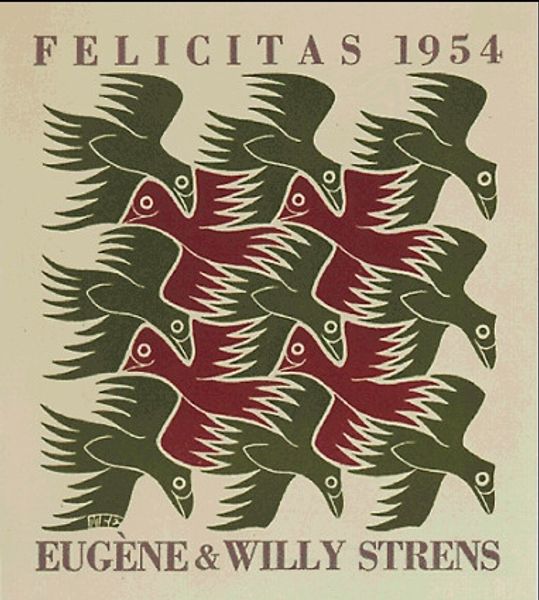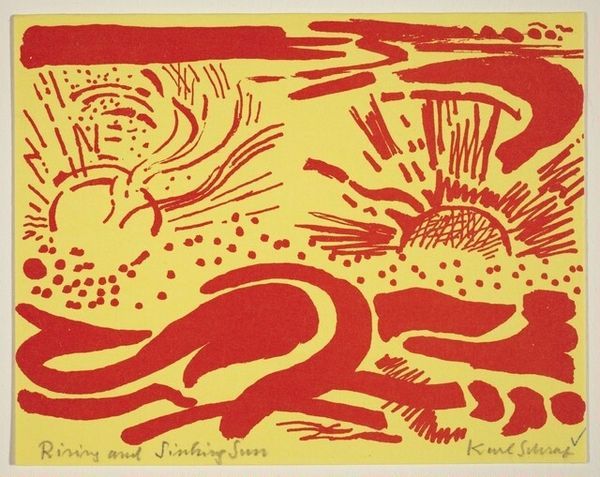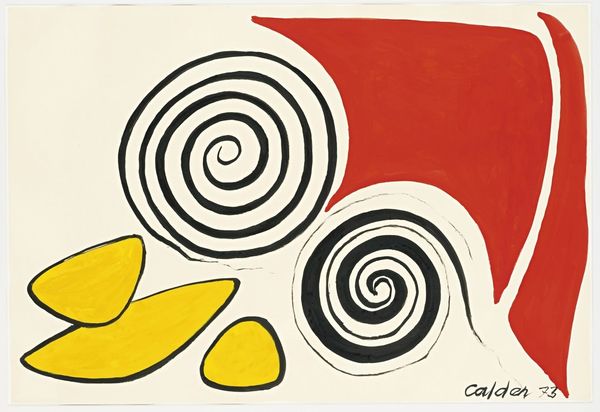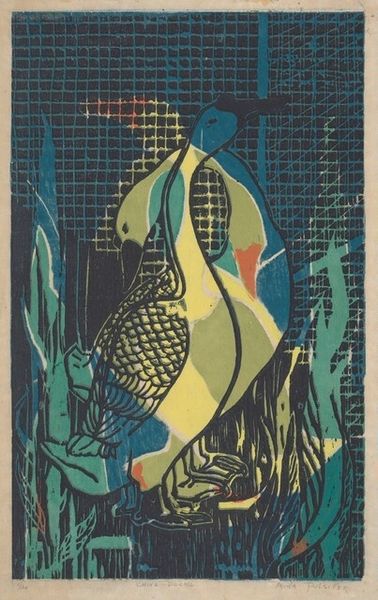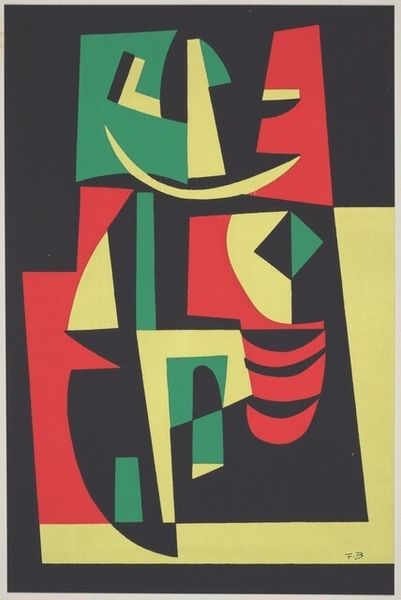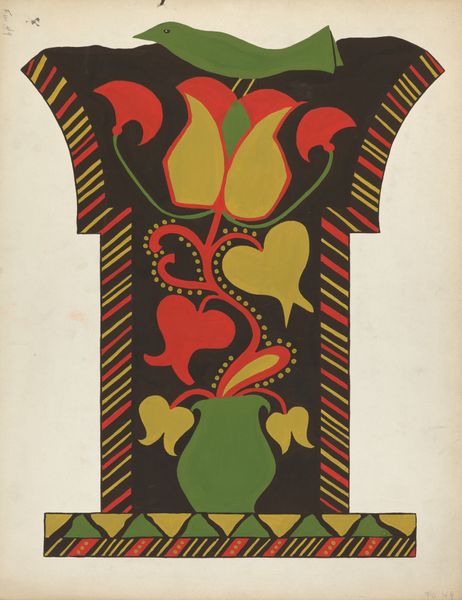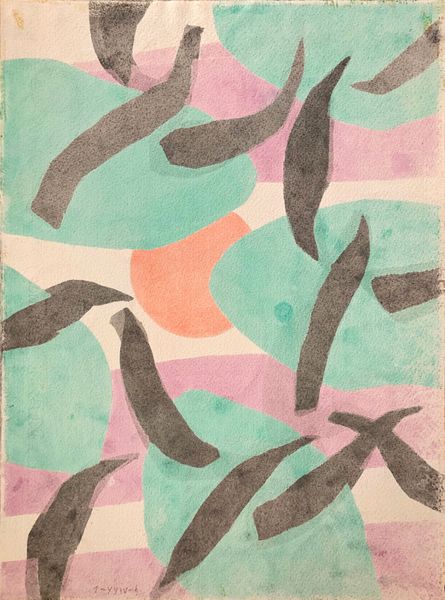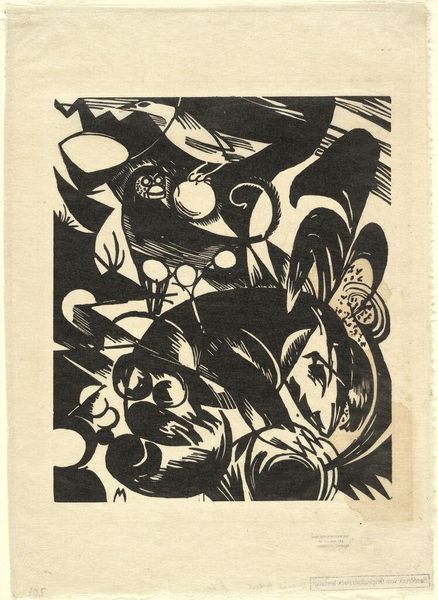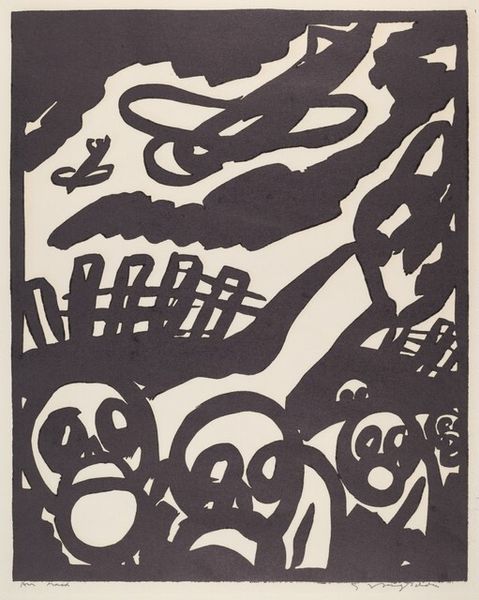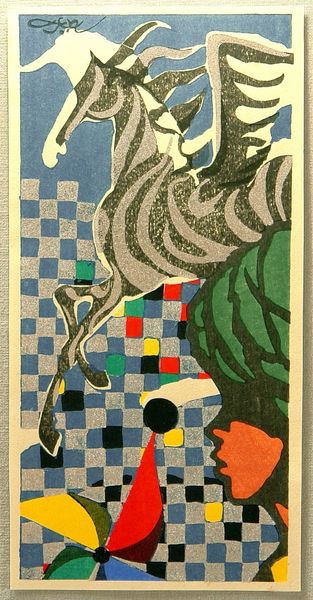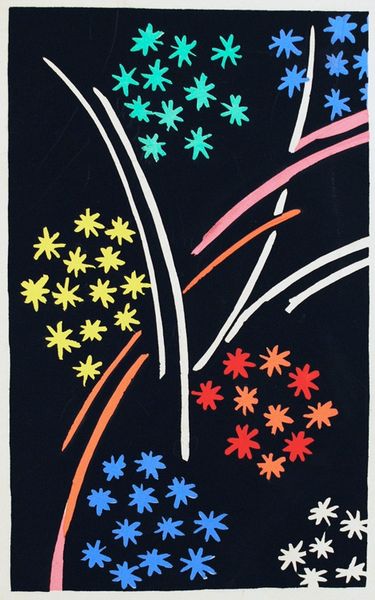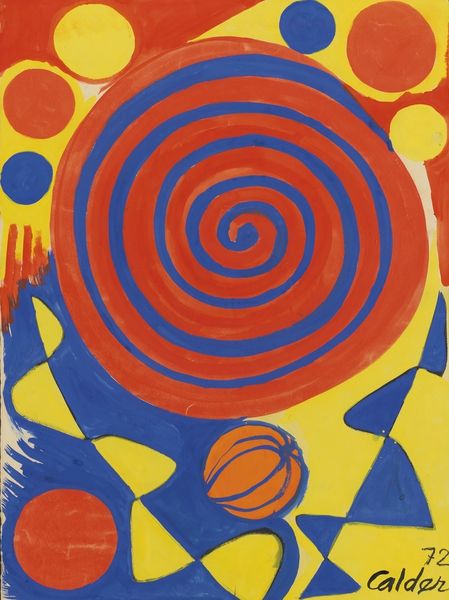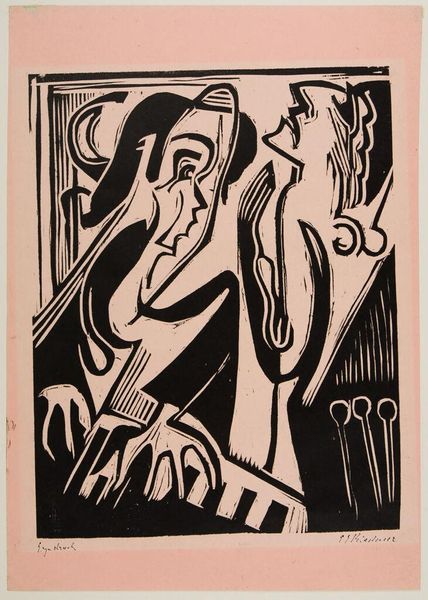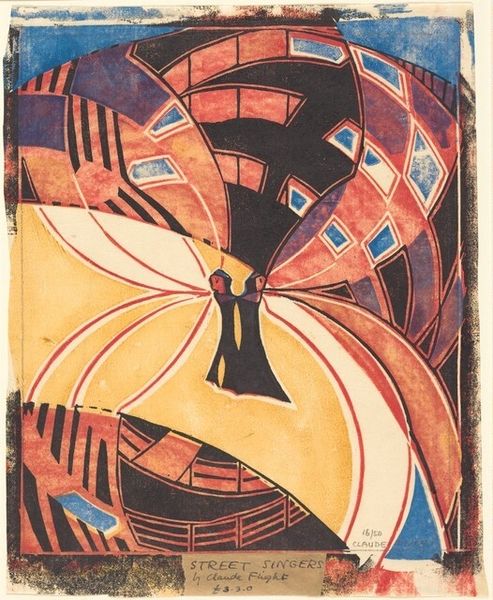
Copyright: M.C. Escher,Fair Use
Curator: My first impression is how these stylized fish give me both a sense of abundance and of constraint. The way they pack together makes me think about schools of fish but also about how our resources are not infinite. Editor: Indeed, that sense of both abundance and limitation is something M.C. Escher captured so well. What we are looking at is a 1952 print entitled "The Four Elements - Water." Here we see a tessellated plane filled with alternating blue and green fish. It calls to mind Japanese woodblock prints and motifs of ocean waves and koi, yet given Escher's background, this perhaps may seem unexpected. Curator: Well, tessellation in art often reflects a cultural need for order, wouldn't you agree? Repeating patterns echo a desire to comprehend a seemingly chaotic world. This constant motif reminds me of symbolic attempts in Byzantine art to render theological harmony comprehensible through icons. What societal norms might Escher have been trying to impose here? Editor: I would agree, patterns like tessellations often are deployed during periods of instability or rapid change. After WWII, there was significant pressure to return to the old normal, the "nuclear family" of the pre-war era, the suburban dream... Do you see the connection I am trying to make here? In the face of modernization, one could argue that he offered familiar patterns of pre-war tradition. Curator: Interesting. While Escher had no political alignment, per se, there could still be messages hidden inside! And what about these fish as symbols? Are they simply decoration, or could they represent deeper themes, perhaps referencing mythology or Jungian archetypes linked to the unconscious? Fish frequently represent transformation, subconscious depths, or spiritual insight in many traditions. The fact that these tessellated creatures create almost a kaleidoscope effect... Perhaps this conveys an entry point to different understandings and hidden meaning, that requires more reflection. Editor: I am on board! I tend to see these sorts of repeating elements more like advertisements: The constant iteration of the form drills the central ideas directly into our heads. I suppose either of these are likely candidates! Curator: Well, it gives one pause. There is indeed much room for thought... I find this artwork evermore fascinating! Editor: And I concur! It challenges any preconceived notions we bring, inviting contemplation and interpretation.
Comments
No comments
Be the first to comment and join the conversation on the ultimate creative platform.
